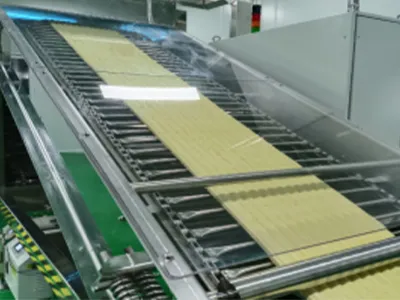Exploring Various Types and Styles of Soba Noodles
Exploring the Types of Soba Noodles
Soba noodles, a staple of Japanese cuisine, are known for their unique flavor, nutritional benefits, and versatility. Made primarily from buckwheat flour, these noodles come in various types that cater to different tastes and preferences. In this article, we will delve into the different types of soba noodles and explore how they can be enjoyed in various dishes.
1. Juuwari Soba (100% Buckwheat Soba)
Juuwari soba is made entirely from buckwheat flour, making it the purest form of soba noodles. This type of soba has a strong buckwheat flavor and a firm texture. Because buckwheat does not contain gluten, juuwari soba is a great option for those with gluten sensitivities. When cooked correctly, these noodles have a nutty aroma and a slightly chewy consistency. They are often served chilled with a dipping sauce (tsuyu) or in a hot broth.
2. Haru (or Suru) Soba (Soba with Wheat Flour)
Unlike juuwari soba, haru soba contains a mix of buckwheat flour and wheat flour, typically composed of 80% buckwheat and 20% wheat. This blend provides certain elastic qualities that make the noodles easier to work with, and they tend to retain a firmer texture during cooking. Haru soba is popular in various dishes and is often used in hot soba dishes topped with vegetables, meat, or seafood. This type of soba is more commonly found in restaurants and households due to its availability and balanced flavor.
3. Zaru Soba
Zaru soba refers to cold soba noodles served on a bamboo mat (zaru) alongside a dipping sauce. This dish is especially popular during the summer months when people seek light and refreshing meals. The noodles are typically cooked until al dente, rinsed under cold water to stop the cooking process, and chilled. Diners dip the noodles into the savory sauce, which is usually made from soy sauce, mirin, and dashi. Zaru soba may be garnished with sliced green onions, wasabi, and nori (seaweed). It’s a simple, elegant dish that allows the flavor of the soba to stand out.
soba noodles types

4. Kake Soba
Kake soba is a warm soba dish served in a flavorful broth, making it a comforting meal, particularly during colder months. The broth is usually made from dashi, soy sauce, and mirin, providing a delicate umami flavor that complements the nuttiness of the soba. Kake soba can be topped with various ingredients such as sliced green onions, tempura, or a raw egg. This dish is appreciated for its warmth and the depth of flavors that come from the broth and toppings.
5. Tama Soba
Tama soba is a unique type of soba that incorporates the addition of various ingredients, such as vegetables or herbs, directly into the dough. This type of soba can come in vibrant colors and diverse flavors, making it visually appealing as well as delicious. Common additions include green tea powder (matcha), which gives the soba a bright green hue, or vegetable purees that infuse the noodles with additional nutrients and flavors. Tama soba is versatile and can be served hot or cold, allowing cooks to get creative with how they present this colorful noodle.
6. Inaka Soba
Inaka soba, meaning country soba, is traditionally handmade in rural areas of Japan. This rustic type of soba may not be as finely milled as its counterparts, resulting in a heartier texture and a slightly grainy flavor. Inaka soba celebrates the authentic experience of handmade noodles and is often enjoyed in a simple broth or with locally sourced toppings. This type of soba often reflects the cultural practices and traditions of the regions where they are made, offering a taste of Japanese heritage.
Conclusion
Soba noodles come in a variety of types, each with its own unique characteristics and culinary applications. Whether you prefer the purity of juuwari soba or the heartiness of inaka soba, there is a soba noodle variety to suit every palate. Their versatility allows them to be enjoyed in a multitude of dishes, from cold salads to comforting soups. As you explore the world of soba noodles, you will discover not just a delicious dish but also a deep-rooted aspect of Japanese culture that resonates with sustainability and artistry.
-
Is Whole Wheat Pasta Healthy?NewsMay.30,2025
-
Are Soba Noodles Good for Weight Loss?NewsMay.30,2025
-
Are Buckwheat Soba Noodles Healthy?NewsMay.30,2025
-
Are Buckwheat Soba Noodles Gluten Free?NewsMay.30,2025
-
Are Buckwheat Noodles Good for You?NewsMay.30,2025
-
A Healthy Way to Savor Soba and Spicy FlavorsNewsMay.30,2025
-
What Are Lanzhou Noodles?NewsMay.30,2025
Browse qua the following product new the we

















































































































